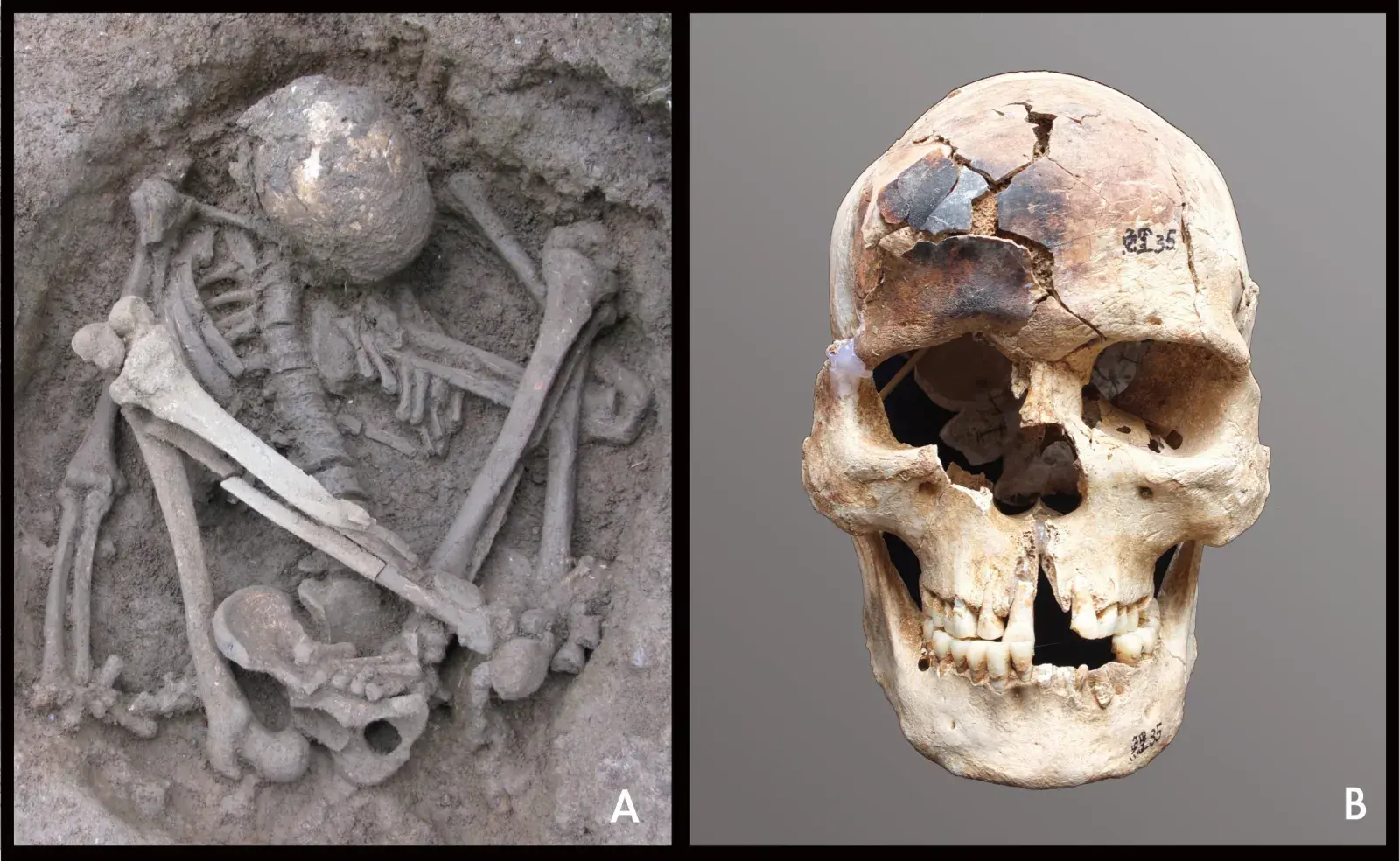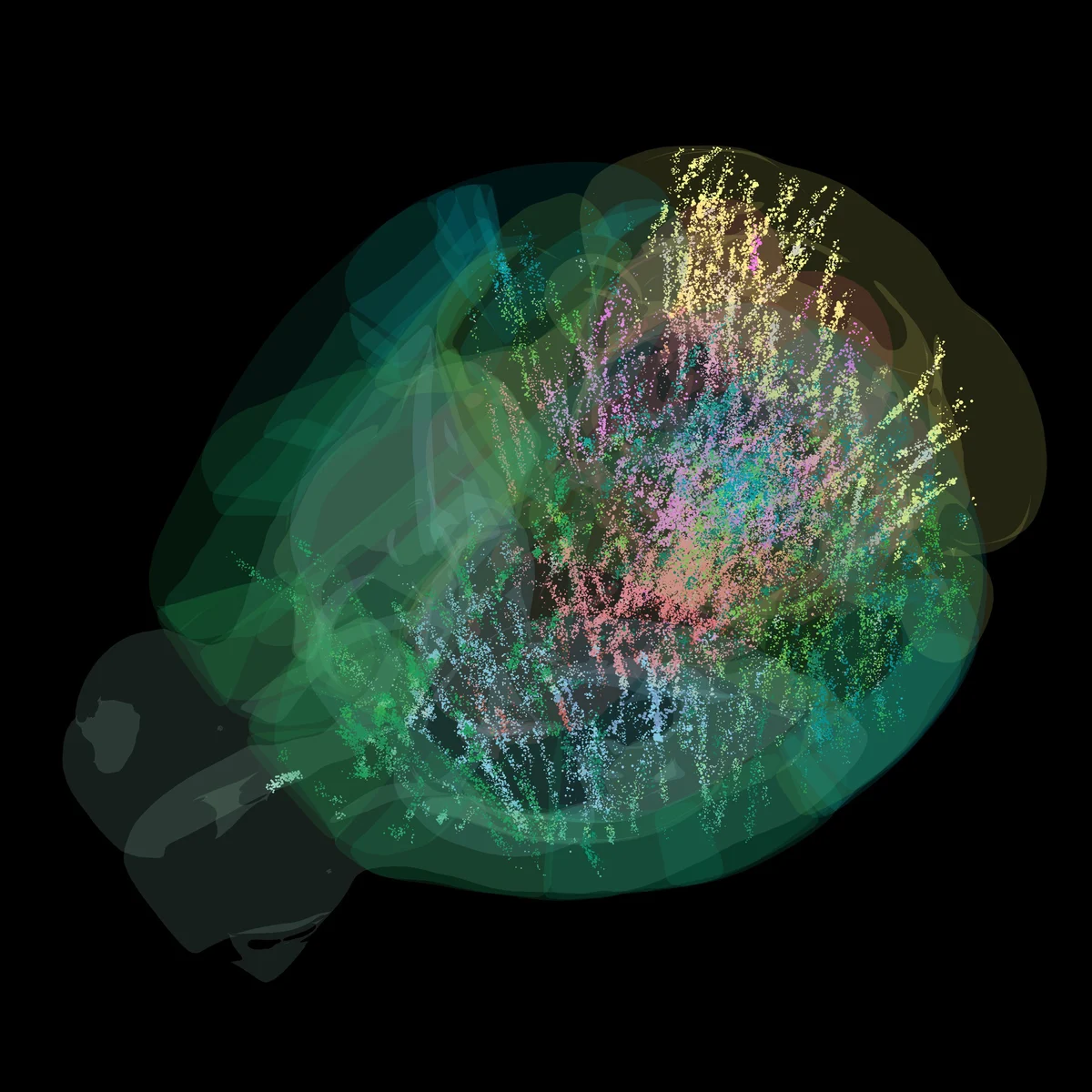By Soo Kim
Copyright newsweek

Archaeologists have identified what is believed to be the earliest known evidence of human mummification, predating those found in ancient Egypt by thousands of years.Published in the Proceedings of the National Academy of Sciences (PNAS), the study was led by an international research team who analyzed burial sites across Southeast Asia and southern China.The study found that hunter-gatherer societies between 12,000 and 4,000 years ago practiced smoke-drying techniques to preserve the dead.These methods represent “the oldest known instances of such artificial mummification in the world,” the researchers said in the study.Young male individual in a hyper-flexed position (left) from the Liyupo site in Guangxi, China, dating to around 7,000 years ago, with a partially burned skull (right). These societies in southeastern Asia buried their dead mostly in flexed, tightly crouched, or squatting postures, often with traces of burning.“Such burial practices contrast with subsequent Neolithic burials in extended supine postures,” the researchers explained.In total, the research team examined bone samples from 95 archaeological sites.They reported that the tightly crouched postures and lack of bone disarticulation indicated the bodies had not decayed naturally before burial.Instead, the evidence suggested that the bodies were dried and preserved, buried in a desiccated state, rather than as fresh cadavers.X-ray diffraction and infrared spectroscopy analyses of the selected bone samples found evidence of exposure to heat, mostly at relatively low intensities, the statement said.Middle-aged male individual excavated from Huiyaotian in Guangxi, China, found in a hyper-flexed position, and dated to more than 9,000 years ago. Middle-aged woman at the Liyupo site in southern China who was smoke-dried prior to burial. Note: Bone fragments belonging to a second individual have been digitally removed from the lower left corner. The researchers concluded that many bodies were treated with prolonged smoke-drying over fire before burial, a practice the researchers believe is similar to mortuary traditions recorded among indigenous groups in Australia and the New Guinea Highlands.The study “documents smoke-dried mummification of the dead, mostly in tightly bound crouched postures, from archaeological contexts between 12,000 and 4,000 years old across a vast region encompassing Southeast Asia, southern China, and beyond,” the researchers wrote.“The practice continued into the ethnographic record in the New Guinea Highlands and parts of Australia.”The archaeologists emphasized that these burials in southern China and Southeast Asia—dating from the Terminal Pleistocene to the Early and Middle Holocene—differ sharply from later Neolithic traditions.“Such burials contrast strongly with the extended supine burial postures typical of subsequent Neolithic inhumations in these regions. Their contorted postures, often with traces of burning, present interpretive challenges,” they noted in the study.Modern hyper-flexed, smoke-dried mummy of the Dani people, kept in a private household in the Baliem Valley of Wamena, Jayawijaya Regency, Papua (Indonesia). The findings push back the earliest evidence of artificial mummification significantly.“The oldest of these burials predate the mummification associated with the Chinchorro culture (7,000 cal. BP, northern Chile) and Ancient Egypt (Old Kingdom, cal. 4,500 BP),” the researchers said.“Our burial samples from Southeastern Asia highlight a remarkably enduring set of cultural beliefs and mortuary practices that persisted for over 10,000 y among hunter-gatherer communities who were related through their craniofacial attributes and genomic affinities to Indigenous New Guinea Highland and Australian populations.”Do you have a tip on a science story that Newsweek should be covering? Do you have a question about mummification? Let us know via science@newsweek.com.ReferenceHung, H.-c., Deng, Z., Liu, Y., Ran, Z., Zhang, Y., Li, Z., Kaifu, Y., Huang, Q., Nguyen, K. T. K., Le, H. D., Xie, G., Nguyen, A. T., Yamagata, M., Simanjuntak, T., Noerwidi, S., Fauzi, M. R., Tolla, M., Wetipo, A., He, G., … Matsumura, H. (2025). Earliest evidence of smoke-dried mummification: More than 10,000 years ago in southern China and Southeast Asia. Proceedings of the National Academy of Sciences, 122. https://doi.org/10.1073/pnas.2515103122



